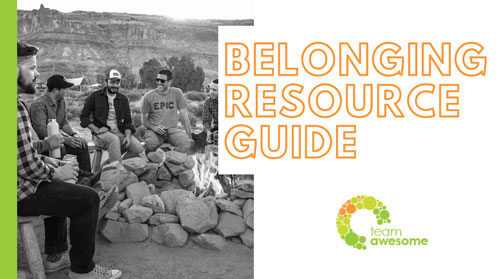More often than we realize, we are not just seeing things as they are. Instead, we attach thoughts and emotions to the things around us and draw conclusions about what is happening. People, places and things are just out there being. We are the ones that attach meaning, fear, excitement, and story to them.
One of my keynote talks, Manage Your Energy, takes participants through the journey of managing your mindset, managing your energy (rather than your time) and finally, when you have to look outward from yourself, managing your communication with others. The key is that they all start with your mindset. Here are some ideas to help you gain awareness when your thoughts aren’t serving you.
Filters
Everything that we have experienced in our lives up to this moment form the filters through which we see the world. Our filters come from our teachers, mentors, experiences, how we responded to those experiences, and all of the information we take in daily (which is a lot!). Some things stick and some pass though our personal filters. Realizing that not everyone sees the world the same way and recognizing that you in fact have your own lens is the first step towards higher consciousness of your thoughts. It seems obvious but if you really dig to the core of it, we make a lot of unconscious assumptions that people see things the way we do. The spoiler here… they do not.
Having awareness of this allows me to witness it when it is happening. I see the clearest example of this as a parent. I have a zesty four-year-old son, and some mornings we wake up and I am notably annoyed by his antics and respond with a shorter fuse than usual. On other days, I am calm and collected and my husband is the one easily frustrated. During either of these days, my son is basically acting with the same behavior; it is simply our own filters and lens on the situation that day that changes how we feel about it and in turn, how we react. (We just hope at least one of us has the “cool as a cucumber” filter on each day, and both of us is a bonus!)
Interpretations
In certain situations, we may find ourselves employing one of the main four internal blocks: interpretations. Interpretations are when we fill in the gaps of what we see around us with stories that we create. For example, you may see a colleague walking down the hall who is normally friendly with you. Today, however, while you grin at them waiting to make eye contact, they don’t. Instead they walk by without smile or interaction. Immediately you think, “Oh no! What did I do that really pissed her off? I don’t even know why she is upset with me.”
See what you did there? You made it about you when perhaps it has nothing to do with you. You filled in the gaps with your own story. It is entirely possible that your colleague just received a call that her father was in the hospital and her head was elsewhere rather than focused on “seeing” you in the hallway. As a result of your story, you might carry some draining energy and emotions the rest of the day rather than allowing the situation to just be as is. Just as we create interpretations that bring down our energy, we can replace it with a more powerful thought that leads to a higher vibe emotion and allows us to take more meaningful actions. It is all entirely within our control to manage our mindset, and therefore manage our energy.
Is this going to happen all of the time? No. But simply having the awareness is the first start to replacing thoughts that bring your energy down. Once you are aware of the interpretation you are making, you can choose a more powerful thought and replace it in your mind. It is like training a muscle where the more you practice the easier it becomes and the faster you can manage your mindset until it becomes automatic in the present moment rather than afterward.
Here is what it might look like. Imagine this:
You are driving down the highway and out of nowhere someone in a big SUV flies by and swerves in front of you to get around other cars as they speed forward. Your immediate reaction is, “What the hell, jerk!” The replacement thought might be, “I am glad that I am safe and calm in my commute today. That person must have an emergency.”
This practice can be so valuable because it allows you to maintain the power of your mindset. When you consciously choose your thoughts, you are no longer handing over your power and your energy to others or to the situation. You remain at the cause of your day, rather than at the effect. The moment we allow ourselves to follow a downward spiral because of how we interpret the events around us, we allow our energy to drain with it. And that means the difference between having a productive day or not, feeling motivated to go to the gym or not, or willingness to try new things and find opportunity (or not). All of this happens because of the filters we are wearing. And it is not just about wearing rose-colored glasses with no discernment. It is about making a conscious choice to notice that things just are (without a story attached) and then consciously choose how we feel and what we do next.
About the author:
Katie Rasoul is the Chief Awesome Officer for Team Awesome, a leadership coaching and culture consulting firm. She is a TEDx speaker alumna, author of the best-selling book, Hidden Brilliance: A High-Achieving Introvert’s Guide to Self-Discovery, Leadership and Playing Big, and co-host of The Life and Leadership Podcast.
Find out more by visiting www.teamawesomecoaching.com or join the Team Awesome Community for awesomeness coming straight to your inbox. Follow Team Awesome on Instagram, Facebook and Twitter.
See more about Katie’s keynote presentation on this topic, “Manage Your Energy” here.



Recent Comments